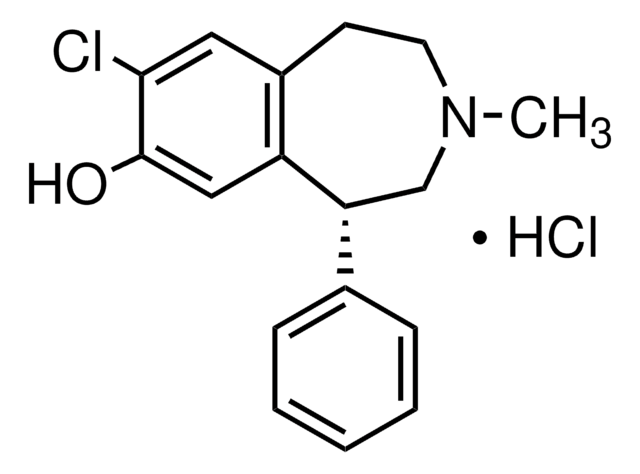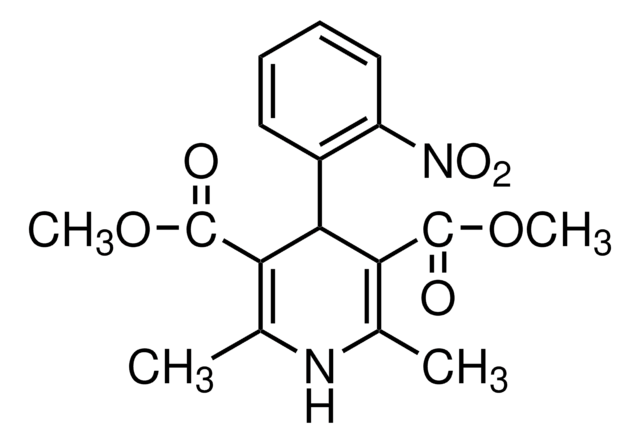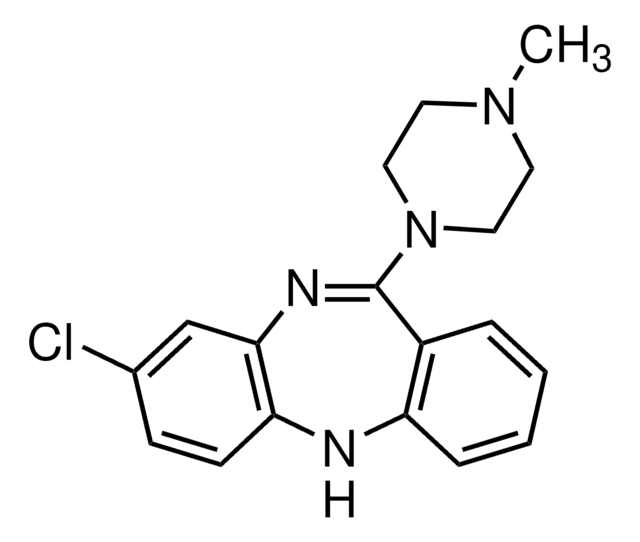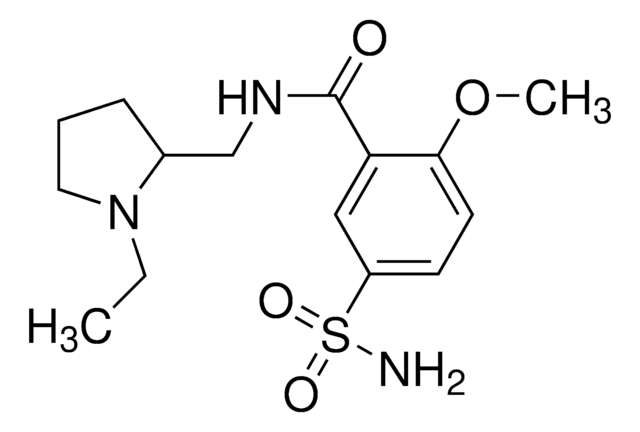Kluczowe dokumenty
SML2591
SCH-39166 hydrobromide
≥98% (HPLC)
Synonim(y):
(-)-trans-6,7,7a,8,9,13b-Hexahydro-3-chloro-2-hydroxy-N-methyl- 5H-benzo[d]naptho-(2,1-b)azepine hydrobromide, (6aS,13bR)-11-Chloro-6,6a,7,8,9,13b-hexahydro-7-methyl-5H-benzo[d]naphth[2,1-b]azepin-12-ol hydrobromide, (6aS-trans)-11-Chloro-6,6a,7,8,9,13b-hexahydro-7-methyl-5H-Benzo[d]naphth[2,1-b]azepin-12-ol hydrobromide, Ecopipam hydrobromide, PSYRX 101 hydrobromide, PSYRX-101 hydrobromide, PSYRX101 hydrobromide, SCH 39166 hydrobromide, SCH39166 hydrobromide
About This Item
Polecane produkty
Próba
≥98% (HPLC)
Formularz
powder
warunki przechowywania
desiccated
kolor
white to beige
rozpuszczalność
DMSO: 2 mg/mL, clear
temp. przechowywania
2-8°C
Działania biochem./fizjol.
Hasło ostrzegawcze
Warning
Zwroty wskazujące rodzaj zagrożenia
Klasyfikacja zagrożeń
STOT SE 3
Organy docelowe
Central nervous system
Kod klasy składowania
11 - Combustible Solids
Klasa zagrożenia wodnego (WGK)
WGK 3
Temperatura zapłonu (°F)
Not applicable
Temperatura zapłonu (°C)
Not applicable
Wybierz jedną z najnowszych wersji:
Certyfikaty analizy (CoA)
It looks like we've run into a problem, but you can still download Certificates of Analysis from our Dokumenty section.
Proszę o kontakt, jeśli potrzebna jest pomoc Obsługa Klienta
Masz już ten produkt?
Dokumenty związane z niedawno zakupionymi produktami zostały zamieszczone w Bibliotece dokumentów.
Nasz zespół naukowców ma doświadczenie we wszystkich obszarach badań, w tym w naukach przyrodniczych, materiałoznawstwie, syntezie chemicznej, chromatografii, analityce i wielu innych dziedzinach.
Skontaktuj się z zespołem ds. pomocy technicznej








